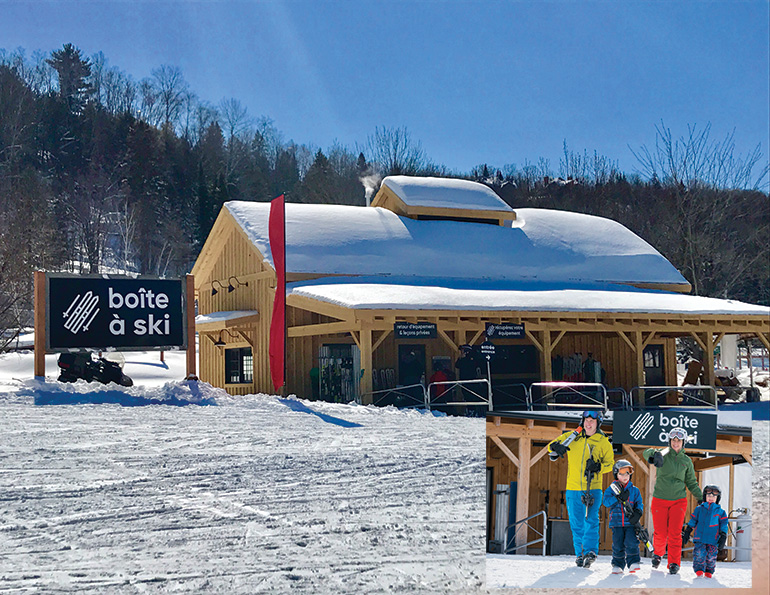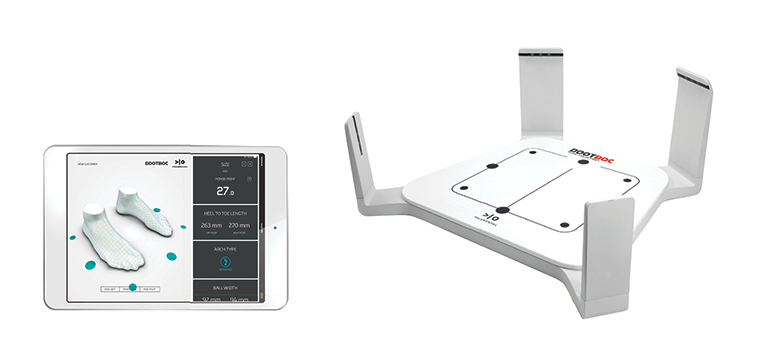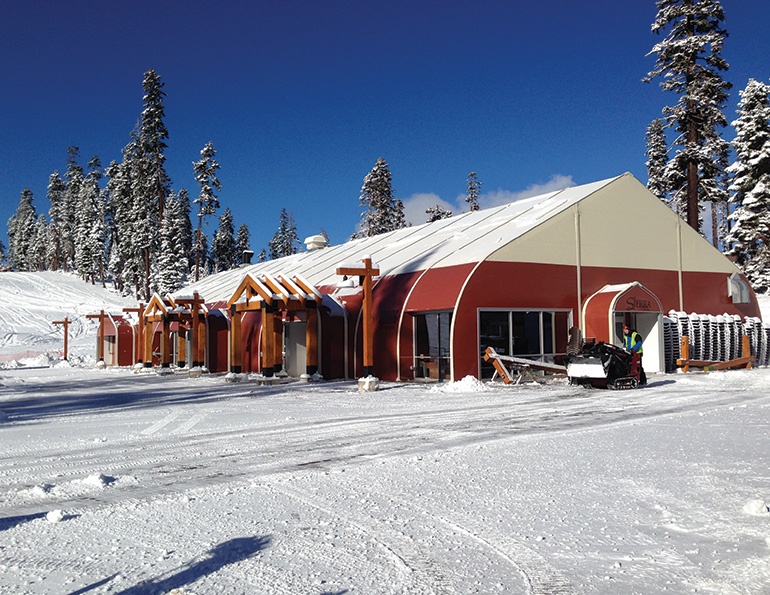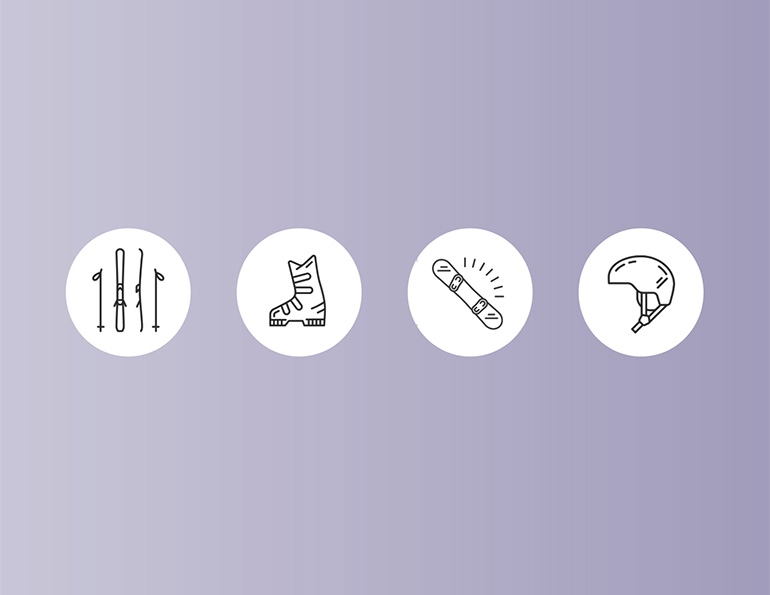Rental operations may be among the most impacted by coronavirus restrictions at many resorts, especially smaller ones. Physical distancing, contact with a variety of high-touch surfaces, and sanitizing boots and helmets are among the major considerations. No one knows what sorts of restrictions might be in place come November, so it makes sense to plan for a range of conditions.
Fortunately, there are solutions for just about all these issues, as a SAM Rental Huddle in late May revealed. Many of these solutions, such as advance booking, could become part of a longer term improvement of the rental process generally.
“The silver lining is, we’re going to look at all kinds of different ways to make our rental shop more efficient. In the end, that’s going to give a better guest experience,” says Rick Schmitz, owner of three resorts in Wisconsin.
North American resorts will benefit from lessons learned by Southern Hemisphere resorts this summer, and from other leisure and recreation industries that are reopening across the Northern Hemisphere, from Disney to the local golf course. By the fall, when resorts will have a clearer sense of what restrictions will be in place, there should be a lot of experience to draw upon.
In the meantime, resorts are reviewing operations, identifying the touchpoints and pinchpoints that could be problematic, and exploring solutions to those potential problems.
“We’re looking at what our bottlenecks are as we look at our whole resort, and rental was one of the biggest ones,” says Schmitz. “No matter how big you are, how small you are, your facilities are vastly undersized on your peak days. Those happen to be the days where we make most of our money. So it’s very concerning to us.”
WATCH, LOOK, AND LISTEN
Operators generally believe that now is the time to keep their eyes and minds open, so they can be ready to start implementing changes by September, when requirements for the coming winter should be more clear. “We have four working groups cruising the internet, finding ideas, checking out what’s happening in the Southern Hemisphere, just looking around,” says Kris Blomback, GM of Pats Peak, N.H. “We meet virtually once a week to check in.”
“Everything is changing so rapidly as experts learn more about this virus that we want to use the time on our side to have as much information before we make more definitive plans,” says Schmitz.” He’s watching what other resorts are doing, including those in the Southern Hemisphere. He’s also learning from his bike park, which went to online-only tickets capped at 250 per day—the volume reached on the park’s busiest day last year. The three days the park was open sold out immediately. And with everything booked in advance, “The check-in process and rental has never run smoother,” says Schmitz.
THINK BIG
Many operators are looking at the big picture as they review their rental operations. “Speed of process,” as Head USA president Jon Rucker puts it, will be a key focus. One element of that may be to spread the process, both temporally and physically: register guests in advance of arrival, including sizing and skier-type information, and go digital with waivers. Then pre-set gear, and deliver it to renters outside of the shop.
Eric Lipton, COO of SNOW Operating and its Terrain Based Learning program, urges resorts to take a ground-up approach: Instead of trying to improve existing procedures, try to imagine the ideal process, and then explore ways to make that happen with your existing facility.
For this exploration, Lipton recommends assembling a cross-functional team of staff that are in contact with guests from the moment they arrive at the resort, such as ticketing and guest services, along with rental and snowsports school staff, too.
“Then, rather than starting at your current baseline and saying, ‘how do we make it better?’ ask, ‘what would it be in a perfect world, how close can we get to that?’ This is an opportunity to change your process in a way that you could live with two years from now,” he says.
Mat Joyce, who oversees seven rental shops at Squaw Valley Alpine Meadows, takes a similar view. “We’re kind of planning to run a defense model—’These are our control measures for COVID prevention.’ But we have an opportunity here to run an offense as well. And this can start with marketing,” including pre-arrival communication, pre-booking customers, and also sharing educational videos and messaging about the new process and resort safety measures, he says. “That will help set the consumer expectation when they arrive. And we can ask for some behavioral changes.”
FOOD FOR THOUGHT
Huddle participants shared a range of ideas that could change the shape of rental operations forever:
• Advance, online reservations. Just about everyone is looking at moving guests to pre-book online, and complete as much “paperwork” as possible prior to arrival. That includes collecting payment, waivers, skier type, and sizing information.
“One of the biggest strategies that we are solving for is the online and pre-book opportunity,” says Joyce. “Now is the time more than ever to flip rental to a predominantly online pre-book business model. We hope to move online reservations from 20 percent currently to hopefully up to 70 to 80 percent.”
• Pre-setting equipment. Advance reservations will enable resorts to eliminate several touchpoints. Techs will be able to pre-set bindings and even select boots in advance. The package can then be delivered to guests with minimal contact with staff or other guests.
• Pre-sizing boots. Impossible, you say? Not so fast. As Ryan Eittreim of Wintersteiger points out, his company includes a 3D foot scanner in its “Future of Rental” package, which has the potential to offer a touchless process from start to finish. The package can determine foot size and choose the appropriate boot from the shop’s inventory. The ski tech can then adjust the bindings based on the boot size and information provided by the renter. The customer can put on the boots and then pick up the skis on the way out the door—or wherever the gear is ready and waiting.
While cost might put the Future of Rental beyond the reach of many shops, simpler 3D scanning is available. As Rucker points out, there are 3D apps available for $1, and they can provide accurate information. He also demonstrated a simple, low-tech solution: tracing foot shape on a piece of paper, and then measuring that in centimeters, which is how most boot sizes are measured. Blomback says Pats Peak may use a variation of this idea: a PDF with foot sizes or a centimeter measure on it, which renters can print and use to measure their foot.
• Speeding the fit process. For walk-in customers, shops are pursuing touchless, or low-touch, fitting. “The boot fitting experience is a high touchpoint, and space productivity is critically important in that area,” says Joyce. “So we’re working with some of our suppliers on fitting tools and making sure we’re utilizing them for every guest, and they’re accurate, and we get the right fit on the first attempt.”
That last point is important, says Joyce. “If a boot isn’t selected because it doesn’t fit, do we need to isolate that boot? We don’t know yet. The first-attempt fit is critical.”
• Scheduled arrival times. Setting up appointments can help meter rental shop occupancy, in line with any government-imposed limits on maximum group sizes. Many of the participants in the Huddle were looking at this option.
Groups are a big part of the rental business for many smaller resorts. Assuming that groups are even allowed to visit resorts, adherence to precise schedules will be key. “We are looking at staggering our start times for all the groups that come and having to get a lot more specific with them,” says Schmitz.
• Text alerts. Lipton notes that a common issue at Big Snow, where online, advance reservations have been required since the indoor ski dome opened in December, has been guests arriving ahead of their reserved time. That causes lines to form or creates a crowd that mills about—and that’s no longer acceptable.
A text alert system, like those used at restaurants, might solve that issue. Joyce says Squaw Alpine is exploring the option. “We use one in our snow sports department right now,” he says. The idea is to send a text alert when the guests’ product is ready, and they can pick it up with an expedited pickup platform.
• Outside delivery. At Big Snow, guests pick up their skis or snowboards on the snow, outside the shop itself. Les Sommets resorts in Quebec, among other resorts, do this as well. “Outdoor ski delivery is outstanding,” says Lipton.” If you’re able to store skis and snowboards outside and do outdoor delivery, you really open up your space inside. In an era of social distancing, having as much space as we can inside is really going to help us.”
 Les Sommets’ boîte à ski (ski box) provides on-snow delivery of rental skis and boards—a convenience for guests that also frees up space for social distancing in the rental shop itself.
Les Sommets’ boîte à ski (ski box) provides on-snow delivery of rental skis and boards—a convenience for guests that also frees up space for social distancing in the rental shop itself.
• Longer hours. Opening earlier in the day and operating later in the evening can help accommodate physical distancing and occupancy limits in the shop. Several operators are considering this in conjunction with scheduled appointments.
• Staff health. At Squaw Alpine, Joyce is looking at internal COVID-19 mitigations—scheduling in particular. “We’re exploring the idea of group or squad employee scheduling, so that a group of employees works the same days and the same shifts,” he says. That will help the teams work more efficiently, and help prevent the spread of infection if a staff member becomes ill. (See “Getting Back to Work,” p. 54, for more on teams.)
Resort Examples
Wachusett Mountain, Mass., conducted a brief experiment in pre-setting and outside delivery in March, the day before the state-ordered shutdown ended operations for the season. The area went to advance reservations to collect payment and guest data, and delivered gear out a window. Renters could sit on a bench to try on their boots and then pick up skis on the base lodge deck. If needed, they could return boots through the window for a better fit. A staff of three managed to do all the running, and sent out 1,100 sets of gear on the day, says COO Carolyn Stimpson—who was one of the three.
Pats Peak, N.H., has the benefit of a larger-than-usual shop, nearly 10,000 sf, and it was redesigned several years ago with some features that look prescient. Instead of moving operations outside, it is looking at ways to eliminate touchpoints within the shop.
That starts with guests booking in advance online, which involves “making our website as friendly as possible,” Blomback says, and using innovations like the aforementioned PDF trace of the guest’s foot. “And we may set up some sort of concierge process,” he adds.
With its ample square footage, the shop can run four separate lines from front to back, keeping guests distanced and also maintaining capacity. It’s also equipped with a dehumidifying system, as well as dryers on the boot racks, which will make sanitizing gear and surfaces easier. The exit door is automatic, so no one needs to touch it. Automatic doors may be installed at the entry as well.
Sanitization is a key piece of the planning puzzle. “The virus can sustain itself on plastic surfaces for up to 72 hours, so we are going to basically disinfect the entire rental shop,” Blomback says. “We’re working with our partners on that, looking at Ecolab, Lysol, Steriphene. Our lodge maintenance team has been demoing different backpack units, too.”
Brian Head, Utah, rental manager Chuck Driggers is exploring a variety of steps to maintain capacity: longer hours, expanded space, and more pre-purchases online. He aims to set up customers’ gear prior to arrival. Then, “We’re looking at a tent where we’ll stage pre-reservations, with their tickets already in an envelope. Guests just drive up, like a drive-thru McDonald’s, and pick up their stuff.”
SUPPLIER CONTRIBUTIONS
With national and worldwide connections, suppliers can be a source of process and operational ideas. Wintersteiger’s Eittreim and Head USA’s Rucker shared their perspectives during the Huddle. We chose these two for their rental focus—Head has championed speed of process with its BYS program, and Wintersteiger has developed its highly automated “Future of Rental” system.
 Wintersteiger’s 3D foot scanner offers a touchless solution to measuring feet, and can help speed the boot fitting process.
Wintersteiger’s 3D foot scanner offers a touchless solution to measuring feet, and can help speed the boot fitting process.
With a worldwide network of customers, Wintersteiger has been formulating guidelines for rental operations on two overlapping fronts: speed of process, and sanitizing gear. For the latter, it offers a variety of products, and has been testing those for effectiveness against coronavirus.
“With Vital Oxide [Wintersteiger’s sanitizing product] or some of these sanitizers, once you’ve sprayed the boot inside and out—you need a sprayer that gets up into the toe box of the boot—the sanitizer needs to sit on that for approximately 10 minutes,” says Eittreim. The boot will then need to go on a boot dryer for up to two hours, but he notes that some local regulations may require a longer period between uses—a reminder that resorts should work closely with local officials, to ensure that any rules are both sufficient and practical.
What about helmets? They will require a different approach. “We’ve had a product group for a long time called Dry Tech, which disinfects and dries work clothes. We’re trying to utilize some of that technology to add a sanitizer or ozone or UV to put rental clothing or helmets into a sanitizing cabinet overnight so they’re safe to reuse again,” says Eittreim. Expect to see more development, from Wintersteiger and others, on this front.
Aside from the Future of Rental and the 3D scanner, “We’re working on some other things that might actually speed up the fit process or give you a foot analysis on an online reservation platform as well,” he says.
Head’s Rucker notes that gear suppliers can assist rental shops on speed of process in several ways. First, by supplying gear itself that “makes it easy and fast to set up a renter’s skis and boots,” he says. Then, suppliers can help shops determine “how to best pre-set your rental fleets. Some of that has to do with DIN setting, some of that has to do with the average boot size you have.” Suppliers can also provide how-to videos for guests.
 Having space to spread out is one way to mitigate lines and crowding. A temporary facility, like the Sprung Structure here, can be an affordable and practical way to add square footage.
Having space to spread out is one way to mitigate lines and crowding. A temporary facility, like the Sprung Structure here, can be an affordable and practical way to add square footage.
FINAL THOUGHTS
“There’s still much to be explored for things like disinfecting, more space, scheduling time, and more importantly, much to learn about others’ successes in this area as well as about the virus in general,” says Schmitz.
“It’s going to be an interesting process, at the end of the day,” he adds. “We’re all going to make changes that will make our processes better, regardless of the virus. Overall, I’m optimistic that while things will undoubtedly be different, demand is stronger than ever. If we plan and do this right, we can provide an even better guest experience and have a great winter.”






